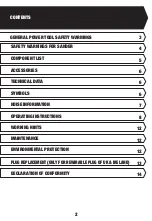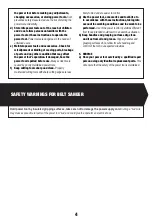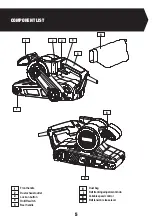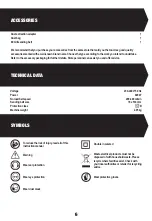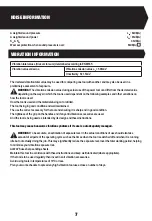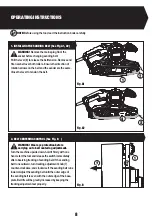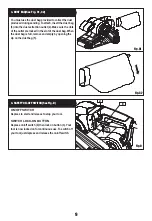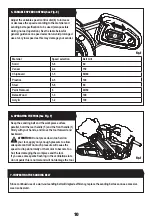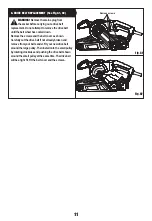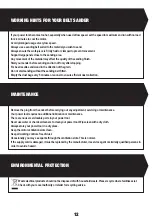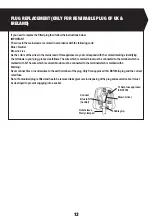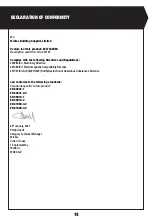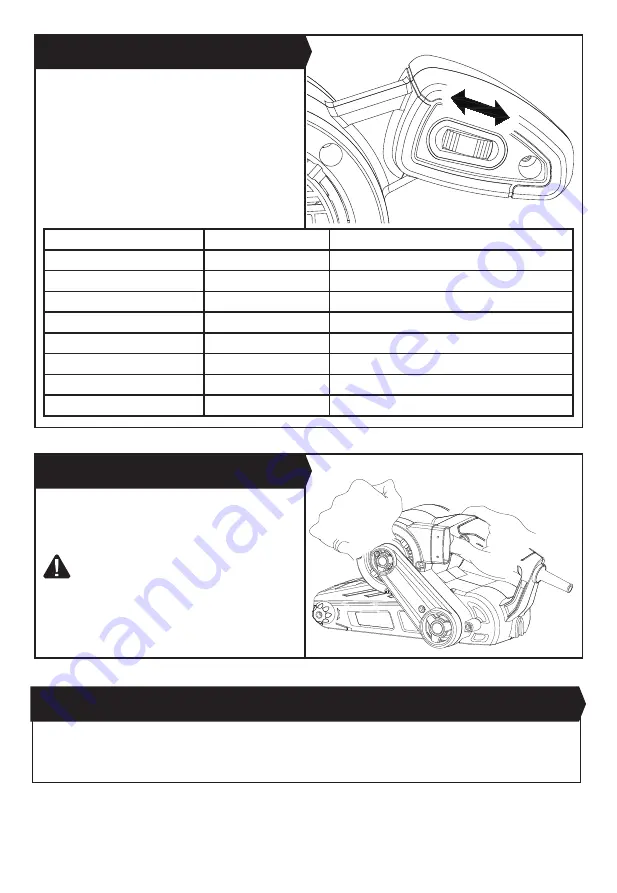
10
Keep the sanding belt and the workpiece surface
parallel, hold the rear handle (5) and the front handle (1)
firmly with your hands, and move the tool forward and
backward.
ATTENTION:
Do not press down too hard on
your tool, apply only enough pressure to allow
adequate control.Too much pressure will cause the
speed to drop abnormally or the motor to become too
hot, thus damaging the workpiece and the tool.
If you see some sparks flashing in the ventilation slots
do not panic this is normal and will not damage the tool.
Adjust the variable speed control dial (8) to increase
or decrease the speed according to the material and
sanding belt specification to be used (also possible
during no load operation). See the table below for
general guidance on speed selection. Avoid prolonged
use at very low speed as this may damage your sander.
6. OPERATING THE TOOL(See Fig. F)
5. VARIABLE SPEED CONTROL(See Fig. E)
Fig. F
Fig. E
2
7. INSPECTING THE SANDING BELT
Since continued use of a worn-out sanding belt will degrade efficiency, replace the sanding belt as soon as excessive
wear is observed.
Material
Speed selection
Belt Grit
Solid
5-6
80
Veneer
2-4
150
Chipboard
1-5
60/80
Plastics
2-5
100
Steel
5-6
80
Paint Removal
6
40/60
Balsa Wood
1-3
100
Acrylic
1-2
100
Summary of Contents for 223740
Page 1: ...PBS900G 1 223740 BELT SANDER 920W 76x533MM...
Page 15: ......
Page 16: ...Customer Helpline 0345 2005409...


